In the two decades that separated Susi Susanti’s triumph and that of Ratchanok Intanon, only one non-Chinese woman managed to win the World Championship singles title. Dane Camilla Martin had to not only rely on her best game and mental fortitude but also take advantage of the fact that the tournament was being held in Copenhagen. It’s been 20 years now and no woman has since managed to make home advantage count.
By Bikash Mohapatra. Photos: Badmintonphoto
The last five years or so can arguably be considered the most competitive era in women’s badminton. To say it is the best of times would be drawing part inspiration from a memorable Dickensian phrase but there are no better – or rather more appropriate – words to explain this period that is providing the game what it has so desperately lacked over the years.
Yes, we are talking about the variety on offer here.
Gone are the days when one nation dominated the women’s game completely. The last few years have seen the rise of a group of young women players who have redefined competition. More importantly, this talented lot doesn’t belong to one particular nation. On the contrary, they are pretty evenly spread out.
While Akane Yamaguchi and Nozomi Okuhara are redefining the singles game in Japan, Saina Nehwal and Pusarla Venkata Sindhu have been the flag bearers for India. Beyond them, we have the hugely talented Tai Tzu Ying from the Chinese Taipei, while from the other end of the continent, there is Carolina Marin, who has single-handedly put Spain on the global badminton map.
If Ratchanok Intanon has won Thailand a bunch of honours, young Mia Blichfeldt is sincere in her attempts to keep the Danish flag flying. Not to forget the duo of Chen Yufei and He Bingjiao (pictured), who have ensured traditional powerhouse China is not completely out of the picture. The above-mentioned, and a few other young players, have ensured in women’s badminton a hitherto unseen competitiveness.
Sample this. When Marin won her third world title in Nanjing, China last year, she made history. Not long back even the biggest optimist of all would not have predicted that the first woman to win the women’s singles title thrice would be from outside China, let alone from Spain. But now it is reality.
Marin, who burst into prominence by surprisingly winning the world title in 2014 and prepares extra hard for the big ticket events, has since taken her chances and captured a clutch of significant titles.
In the subsequent years, while Marin has outdone others at the flagship events, the likes of Tai, Sindhu, Intanon, Okuhara, Yamaguchi, and Chen have either frequently won the other major events or contested the major finals. The best attribute about this lot of players is the fact that no one in particular is dominant, and anyone can beat anybody on a given day, thereby increasing the competition in the sport and giving it a much needed fillip.
This is in sharp contrast to the 1980s, 90s, and even the first decade of this millennium, when the Chinese women had made it a monopoly of sorts. Unlike the Chinese men, who certainly had more competition – from Indonesia, Malaysia and Denmark – the women were a dominant lot.
It was not just about their consistency. It was also about the number of players that came out from the Chinese assembly line, to occupy a bulk of the top 20 slots. For players from other countries, it was possible to beat one, or may be two Chinese opponents in the same tournament. But what could a player do if she had to encounter Chinese opposition in every successive round?
China started participating at the World Championships from the third edition (1983) onwards – having joined the Badminton World Federation (BWF), earlier known as the International Badminton Federation (IBF), in 1981 – and thereafter their women won 15 of the 17 subsequent world titles on offer. Even the legendary Susi Susanti could manage to breach the Chinese bastion and claim the coveted title only once, in 1993.
In the two decades that separated Susanti’s triumph and that of Ratchanok Intanon in 2013, only one other non-Chinese woman managed to lift the coveted trophy. And to do that she had to not only rely on her best game and mental fortitude but also take advantage of the fact that the tournament was held on her home turf that year.
Throughout the peak phase of her career, Camilla Martin (pictured left) was practically the lone challenger to the Chinese hegemony. In almost all the tournaments she played, she had to ward off one Chinese player after the other, in every subsequent round. It was a difficult task, and more often than not she found the going tough.
However, to her credit, the Dane kept trying, and did the job better than others. An amazing collection of big prizes – the 2002 All England, along with 6 Denmark Open titles, the Hong Kong Open in 1996 and 1998 and the Korea Open in 2000 and 2001, the Indonesia Open in 2000, and the 2003 Japan Open, and not to forget her silver medal effort at the Sydney Olympics – provide ample testimony to Martin’s amazing consistency and resolve.
Besides, Martin had an enviable record to boast of against her Chinese contemporaries. Save for two-time World Champion Ye Zhaoying (3-6) and Sydney Olympics gold medallist Gong Zhichao (0-3), the Dane had been impressive against the rest.
While she had the upper hand against World Champions-to-be Xie Xingfang (3-2) and Zhu Lin (2-0), as well as dominating contemporaries Gong Ruina (7-3) and Dai Yun (8-5). Martin did end up with a 5-8 record against Zhang Ning (pictured left). However, the fact is that the 2003 World Champion won their last four matches, implying that during her peak years it was the Dane who led their head to head (5-4) meetings.
Despite her many triumphs and impressive record against the Chinese, it was palpable that winning the world title wasn’t going to be easy. In her three previous appearances in the flagship event, Martin had failed to go beyond the last eight.
The 1999 edition, being held at the Brondby Hall in Copenhagen, was always meant to be her best chance. She was supposed to make her home advantage count. Martin felt the pressure early on. How else can one explain her erratic display in the opening round match versus Olamide Toyin Adebayo?
Against the unheralded Nigerian, Martin not only lost the opening game but struggled to gain momentum, eventually scraping through by a whisker, 9-11, 11-7, 11-9. However, that match turned out to be an eye-opener. The Dane kept her mental focus, upped her performance level and maintained consistency in the following rounds.
She did not come up against a Chinese player until the last eight. The quarter-final against Zhang Ning and semi-final against Gong Ruina – players who would see their names engraved on the trophy in the two subsequent editions – were fairly comfortable affairs as well.
Even the opening game of the final, against another Chinese opponent, All England runner-up Dai Yun, was easily won. It was therefore surprising when Martin’s level suddenly plummeted. Maybe it had to do with the fact that she had lost to the same opponent, from a position of strength, at the same venue in the Sudirman Cup final a week back.
Also, no Danish woman had reached the World Championship final, let alone win, since Lene Koppen triumphed in the inaugural edition in 1977. Maybe the occasion got to her, the fact that she was the lone player representing her country in the final. Her compatriot, Mette Sorensen, also reached the semis that year. However, truth be told she had only benefitted from a favourable draw and quite frankly overachieved. No one expected anything from her. Martin, on the contrary, was the favourite, both among the emotional fans as well as the pragmatic experts.
Likewise, as many as five Danish men had made it to the quarter-finals. But none of the two who made it to the last four – including her then-boyfriend Peter Gade – could make it to the title round. Whatever may be the reason, the pressure was squarely on Martin and she almost succumbed, allowing her opponent to get back into the game not once, but twice over.
After dropping the second game sans a fight, Martin raced to a 10-3 lead in the deciding game. Then she lent the Chinese another helping hand, and Dai gratefully accepted it, levelling the scores at 10-10. It was a mirror image of the aforementioned Sudirman final when Martin had led 9-2 in the decider only for Dai to eventually win 13-11.
However, there was one last twist to this story. An exhausted Martin chose not to set, and it was match point to the Chinese. It was a big risk. But for once the Dane kept her nerve and vindicated her decision, winning the point and sending the vociferous crowd into delirium.
Martin had become the World Champion. It was palpably the biggest win of her career. It has remained that way. It’s a triumph that laid the foundation for the other major results of her illustrious career. It’s an achievement that cemented her place among the pantheon of greats.
It’s been 20 years now. No woman has since managed to win the singles title on home soil. With this year’s World Championships having finished again with no home winner, Martin’s achievement will get an extension of another two years in the least.
It is imperative here to mention that the next edition of the World Championships will be held in Spain (in 2021), in Huelva to be precise. And that happens to be Carolina Marin’s hometown…
![On the home front: When Camilla Martin grasped her biggest chance In the two decades that separated Susi Susanti’s triumph and that of Ratchanok Intanon, only one non-Chinese woman managed to win the World Championship singles title. Dane Camilla Martin had […]](http://www.badzine.net/wp-content/uploads/ngg_featured/20170430_1533_EuropeanChampionships2017_BPRA7939.jpg)
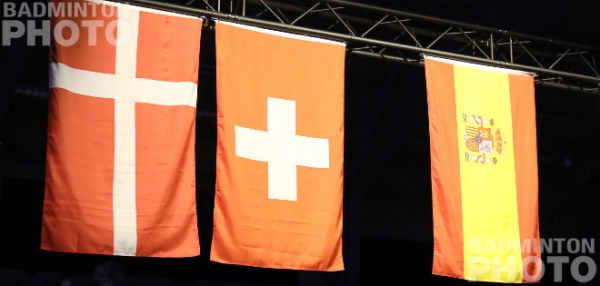
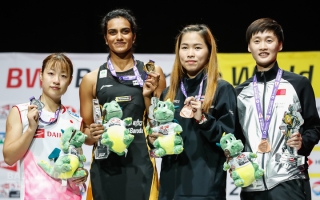
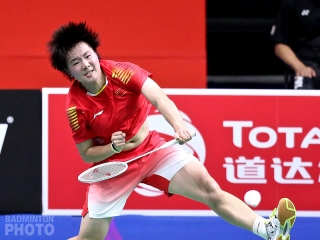
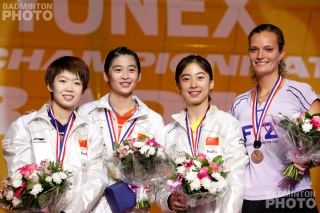
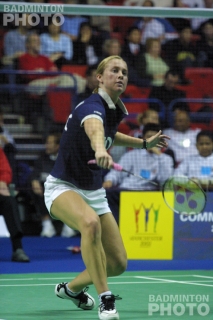
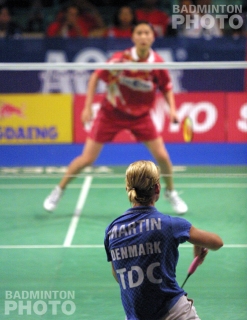
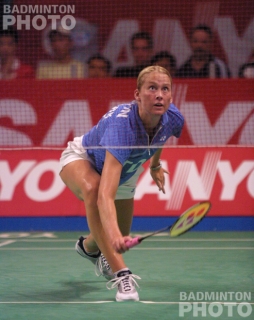



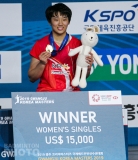
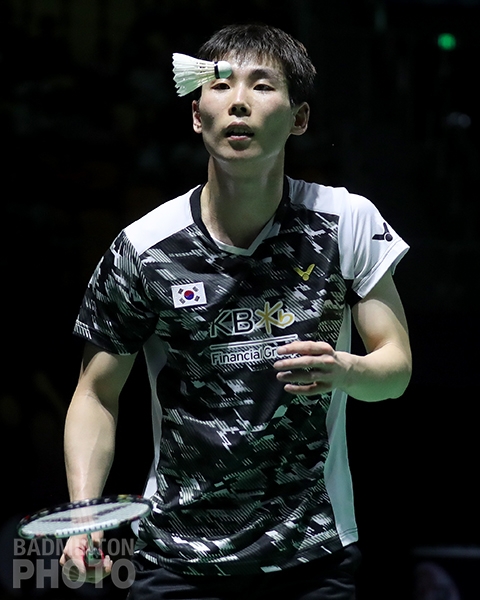
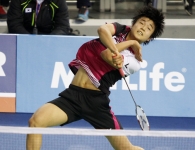
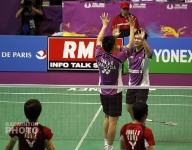


Leave a Reply